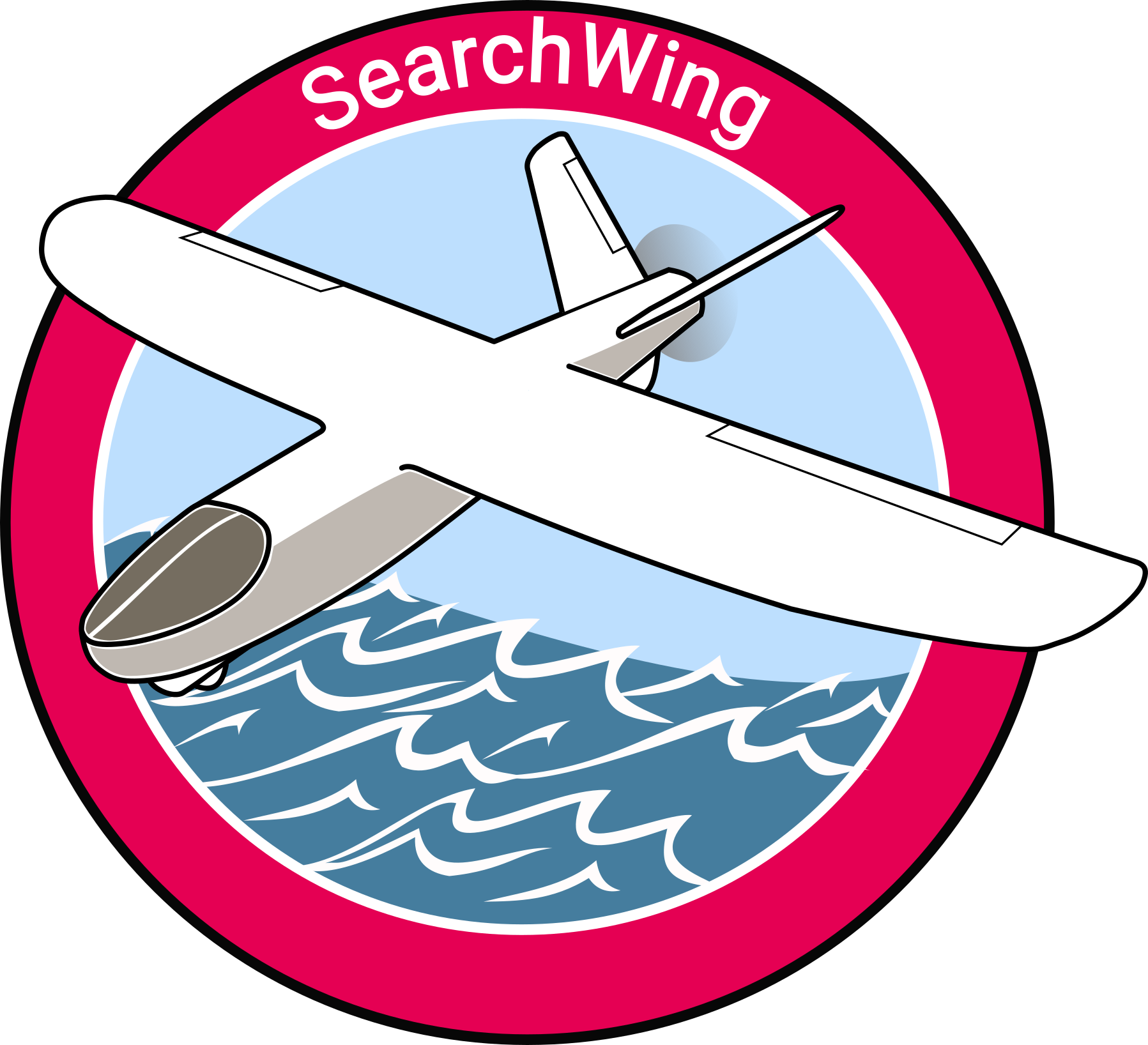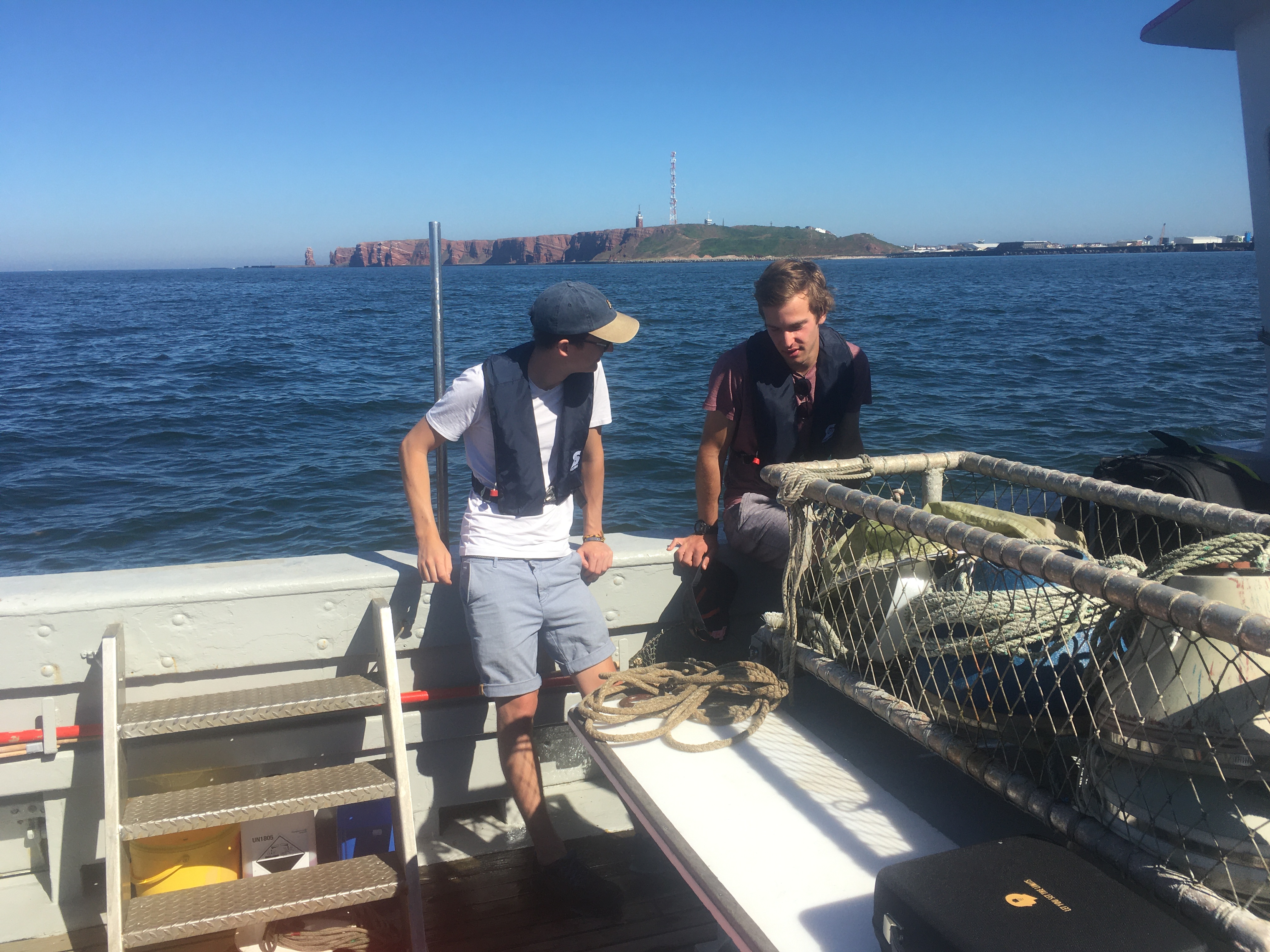The SearchWing summer camp 2022 took place from August 9th to 19th, 2022 on Helgoland. With the excellent support of the Alfred Wegener Institute (AWI), we were able to carry out flight tests at sea. We were a total of eleven participants from Augsburg, Berlin and Hamburg with six students from the Augsburg University of Applied Sciences from the faculties of mechanical engineering, computer science and electrical engineering.

The Alfred Wegener Institute maintains the Wilhelm Mielck House on Heligoland as accommodation for guest researchers and we stayed there during the summer camp. The house has a well-equipped self-catering kitchen and a beautiful living room.
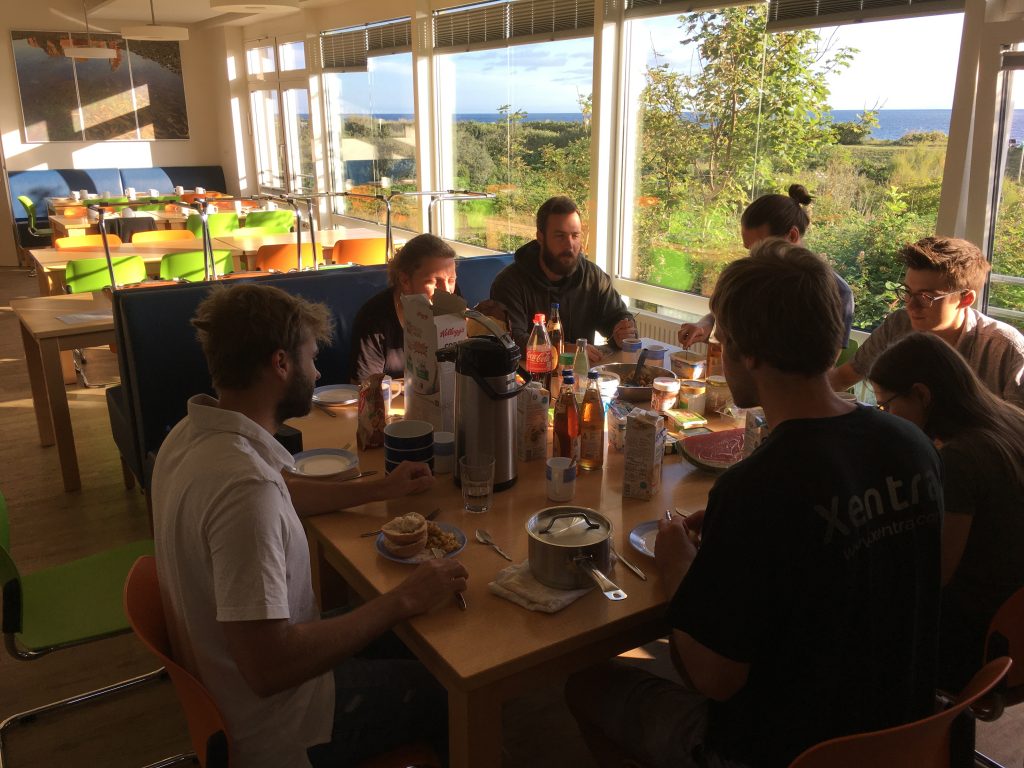
The Alfred Wegener Institute not only has beautiful guest houses but also a perfectly equipped laboratory that is equipped for the analysis of biological samples. For us, with the connected wet area, it was an ideal place for working on our drones.
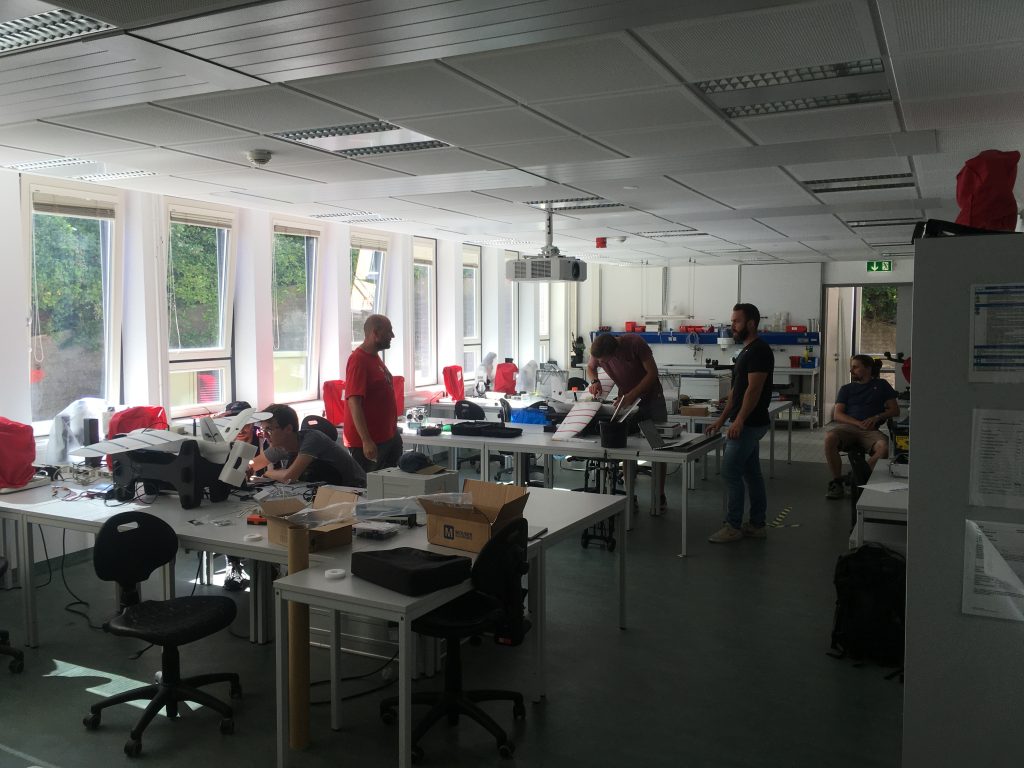
We were able to use two ships from AWI for the tests at sea. The Aade is operated by a professional sea crew who took us to the desired flight zones for testing. With the “diving boat” we were able to drive to the closer test areas when there was little sea.
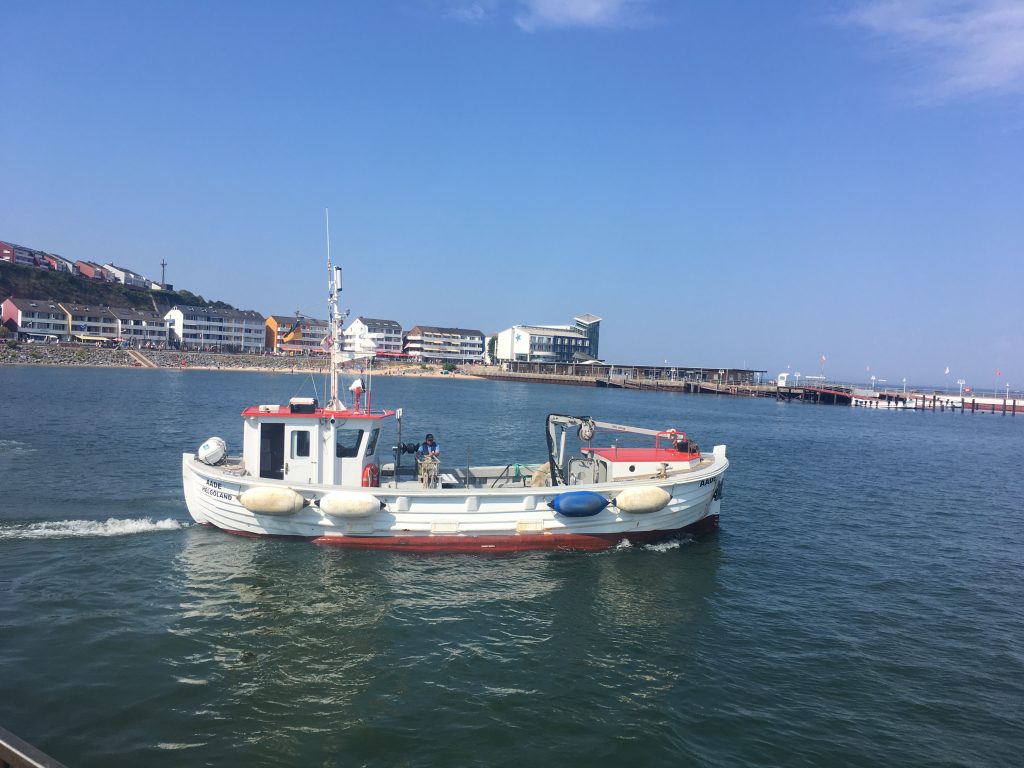
The aim of the flight tests was to test our drones under realistic conditions at sea. These were take-offs from the ship and landings in sea water, but also testing the range under sea conditions.
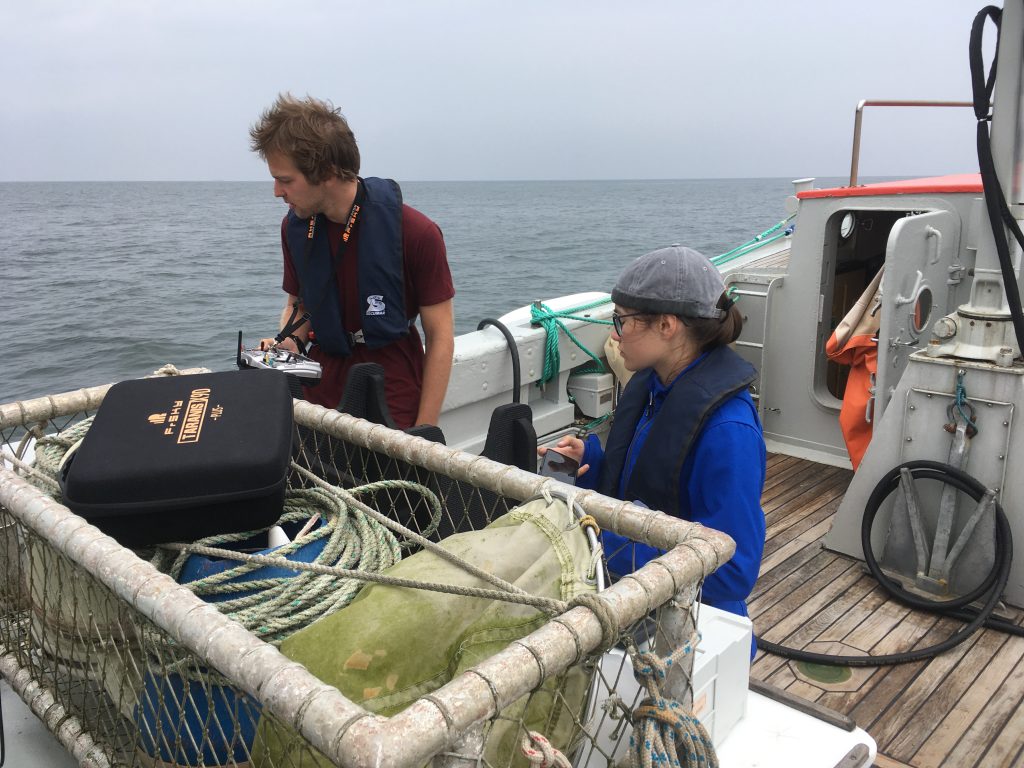
Because of the corona restrictions, a maximum of three researchers could ride on the Aade. The drone is launched by hand and then flies from a predetermined flight plan.
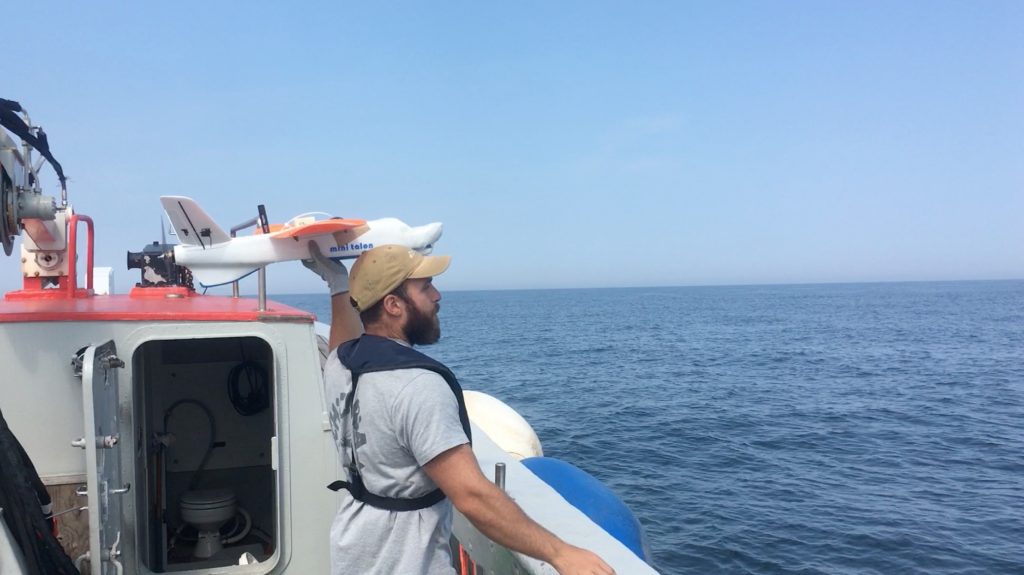

After the drone has landed in the sea water, it is brought back on board with a boat hook.
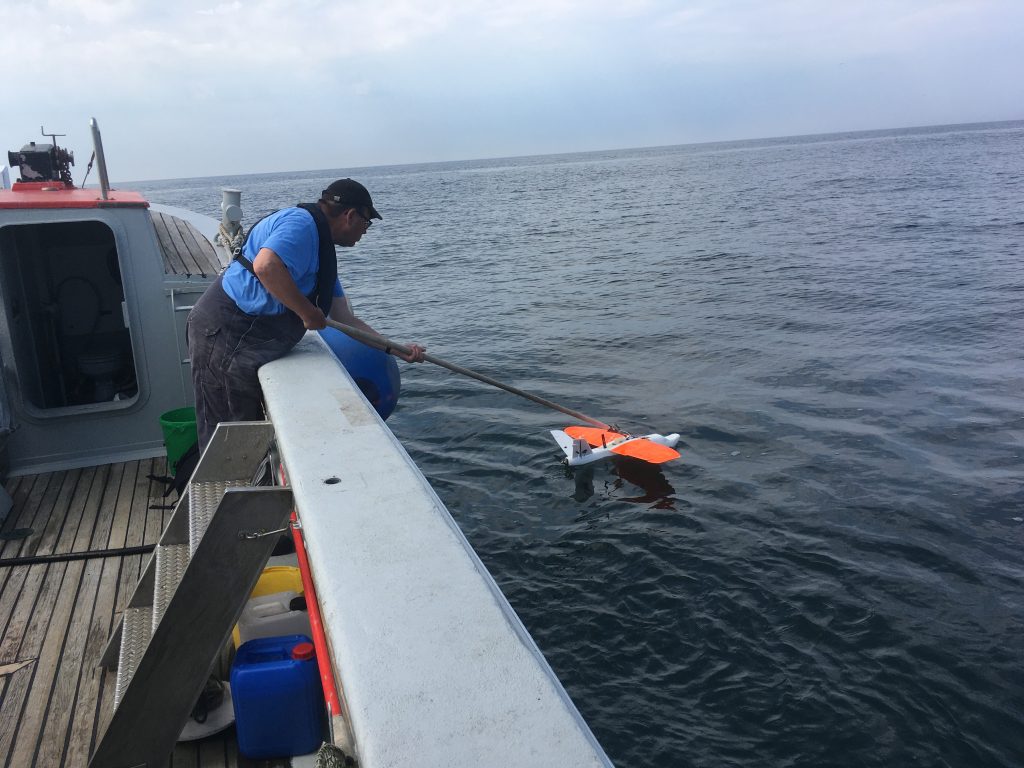
We had permission to fly for three test areas at sea. One test area is designated by the test center for maritime technologies of the Fraunhofer Institute for Manufacturing Technology and Applied Materials Research IFAM and has already been used there for drone tests. Another test area was around the N4 buoy north of Helgoland and one at the south port. With the friendly support of VfL Fosite Helgoland, we were able to use the sports field of the municipality of Helgoland for take-offs and landings on land. The flight tests from the sports field are easier because you don’t have to take the boat out to sea first.


All flights were performed within the pilot’s line of sight as visual line-of-sight (VLOS) flights. You cannot take off anywhere on Helgoland without a permit, since the Helgoland airfield and the heliport for the sea rescue helicopters of the naval aviation squadron are on the island and almost the entire island and the sea are designated as nature reserves. We have therefore obtained approval from the Schleswig-Holstein aviation authority for the flight tests.
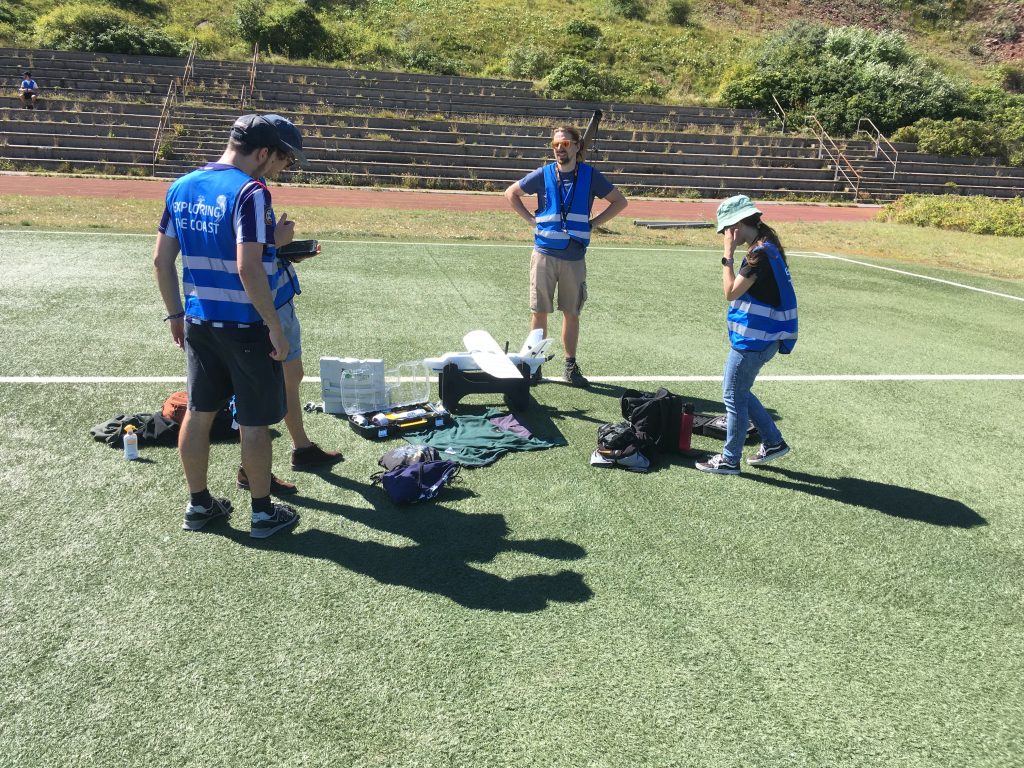
During our flight tests, we also examined the possible range of the drone, among other things. On August 15th we did a flight test with “Elly” at a flight altitude of 120m. The next picture shows the map view of the evaluation of the log data from the flight. We flew in a triangle north of Helgoland with an average speed of 68 km/h.
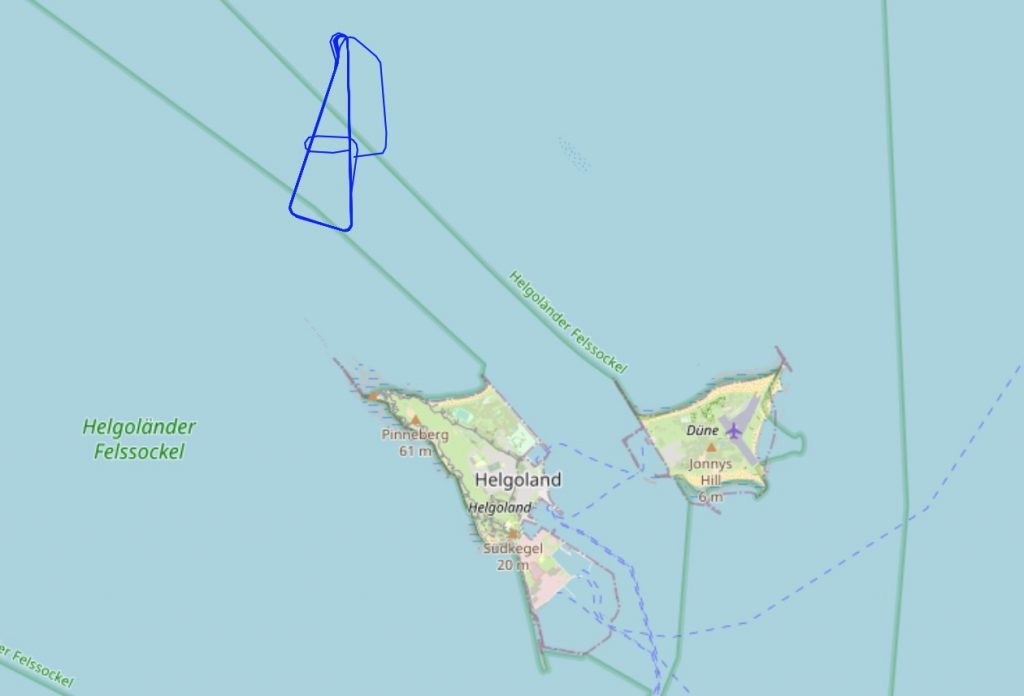
We observed the battery voltage during the flight. Our drone has a lithium polymer battery with a nominal voltage of 14.8 volts and a capacity of 10,000 mAh. When the battery is fully charged, it has a voltage of 16.8 volts. The battery is empty at a voltage of 13.2 volts.
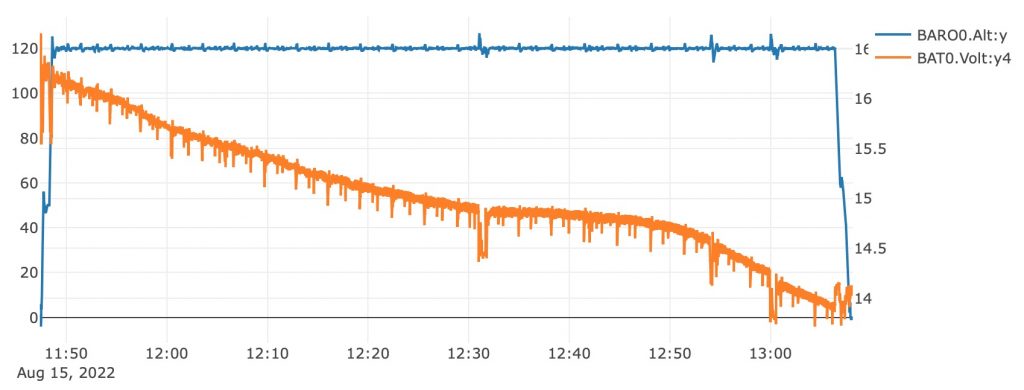
On this flight we flew a distance of 91 km in one hour and twenty minutes. The battery voltage towards the end of the flight was 13.7 volts. At around 12:30 p.m. we went full throttle for a short time. You can see the battery voltage drop from 14.9 to 14.4 volts. At an average speed of 68 km/h, consumption is higher than at a lower speed. The maximum speed during this flight was 103 km/h.
Most tests were conducted in sunny weather with relatively little wind. Towards the end there were more waves and also more wind on two days. In total we performed 13 flights during the 9 days with 8 hours in the air and a total flight distance of 461 km. The two drones passed the tests well and were further tested in subsequent tests in Burriana. The SLA printed electronics boxes with the M8 connectors for the servos withstood the salt water. According to the manufacturer, we used waterproof servos from Traxxas – they show corrosion damage on the screws relatively quickly. On the Extron motors, we swapped the bearings for VA bearings. We no longer have premature fill-ups due to salt water.

We would like to thank the Augsburg University of Applied Sciences for the financial support of the students with the costs of the excursion, the Alfred Wegener Institute for the friendly reception, the IFAM for the friendly reports in connection with the approval, the municipality of Helgoland for help with the flight permits and the permission to use the sports field for the flight tests, the aviation authority Schleswig-Holstein for the patience with the approval, the lower nature conservation authority Pinneberg for the timely assessment of the impact of the flights on the flora and fauna on Heligoland despite the lack of staff, the airport, the SAR branch and HTM Helitravel for the daily individual releases and Verein Jordsand for advice on how to deal with the many birds on the island.
Friedrich Beckmann
